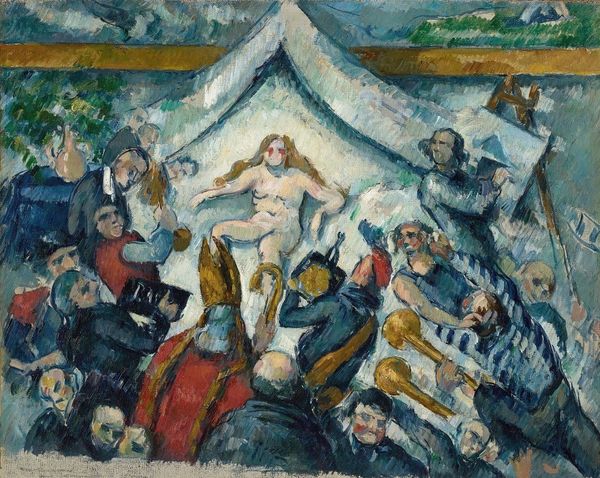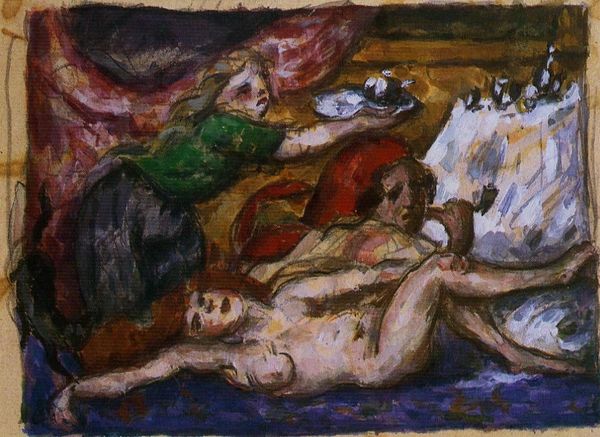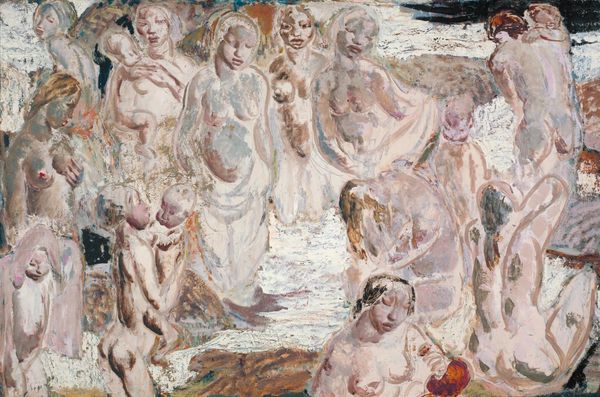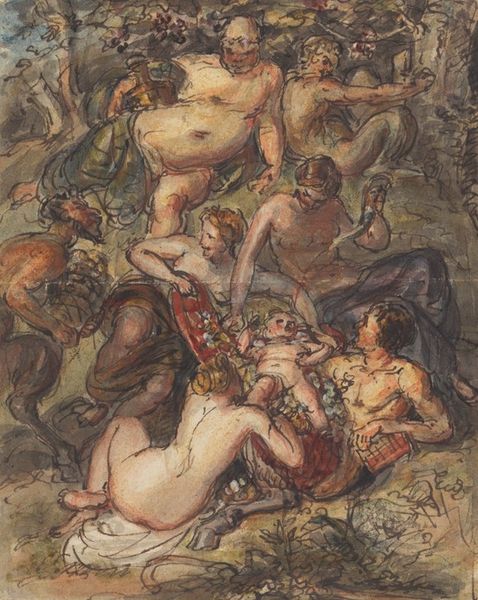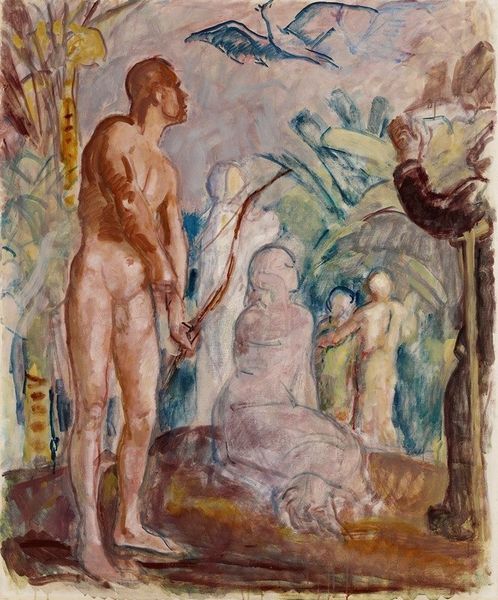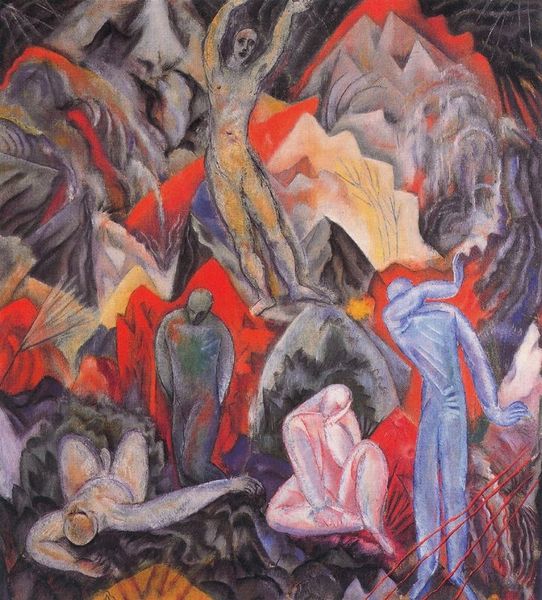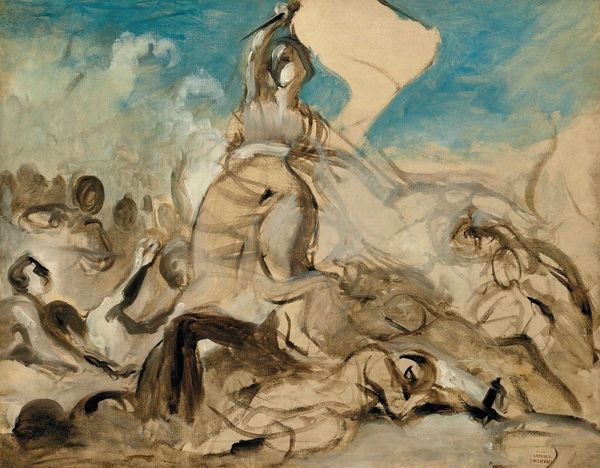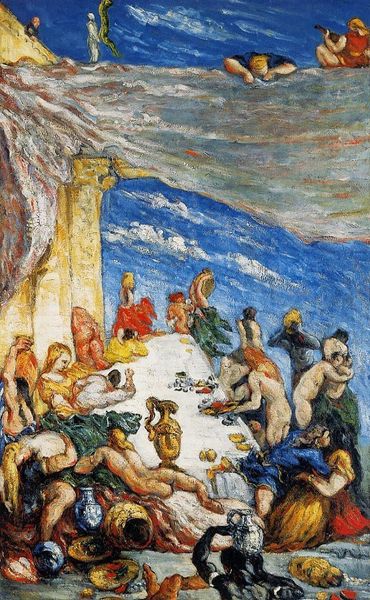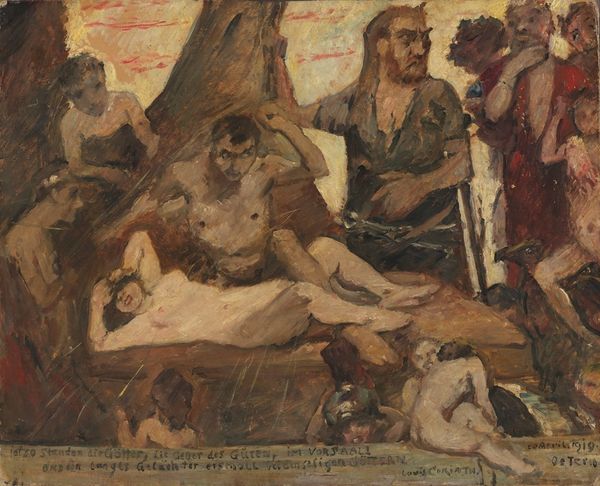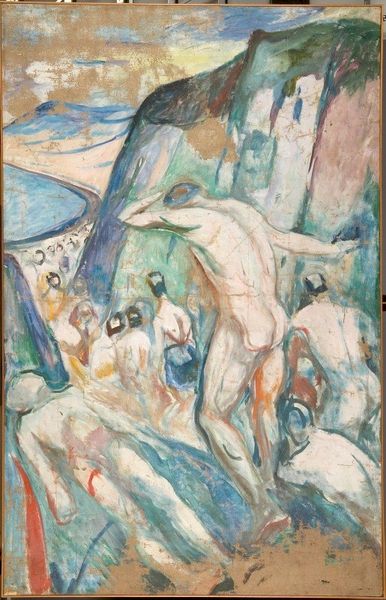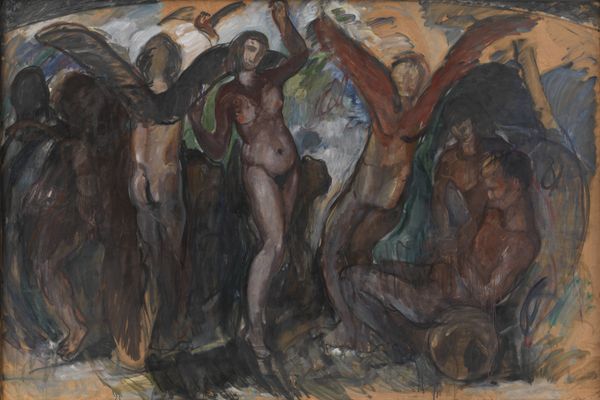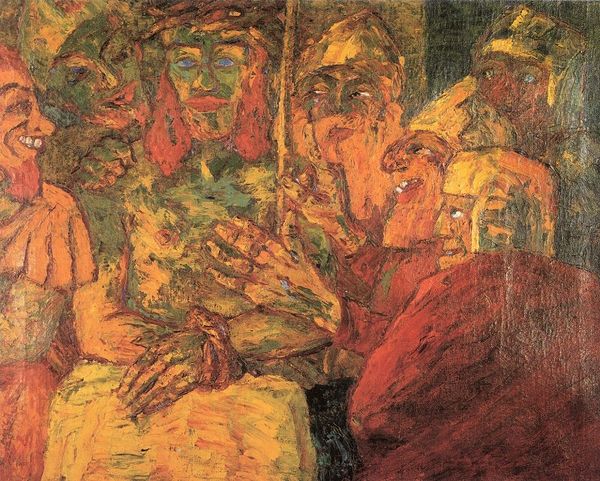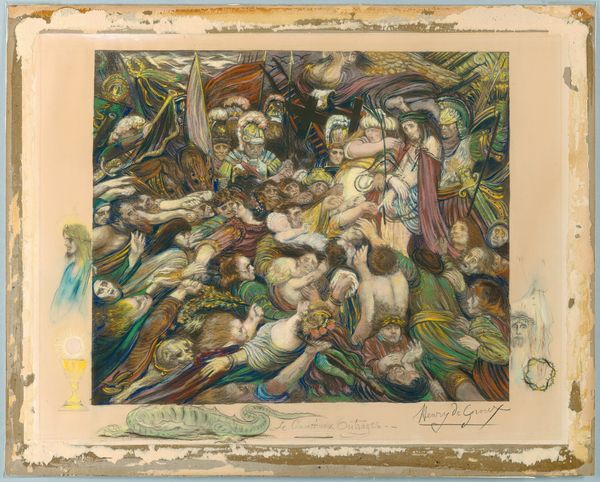
watercolor
#
impressionism
#
figuration
#
watercolor
#
nude
Copyright: Public domain
"The Eternal Woman" is a watercolor made by Paul Cézanne, its location currently listed as a private collection. What strikes you first is a riot of figures, each rendered with Cézanne’s characteristic attention to form. A nude woman reclines at the composition's apex. The painting is filled with a fractured arrangement of faces, each seemingly lost in their own world, set amongst loosely defined objects such as a basket of fruit and musical instruments. Cézanne’s application of color is particularly notable here. He uses the translucence of watercolor to create depth, layering washes of blues, reds, and yellows that bring a vibrant yet ethereal quality to the scene. Cézanne destabilizes traditional figure-ground relationships, challenging viewers to decipher the scene's narrative. The spatial ambiguity invites us to question fixed meanings, engaging with new ways of thinking about perception. Ultimately, the formal complexity of "The Eternal Woman," with its interplay of color and fragmented forms, serves not just an aesthetic purpose. It challenges viewers to question the nature of representation itself. The artwork remains a site of ongoing interpretation, where the boundaries of form and meaning blur, inviting endless contemplation.
Comments
No comments
Be the first to comment and join the conversation on the ultimate creative platform.
